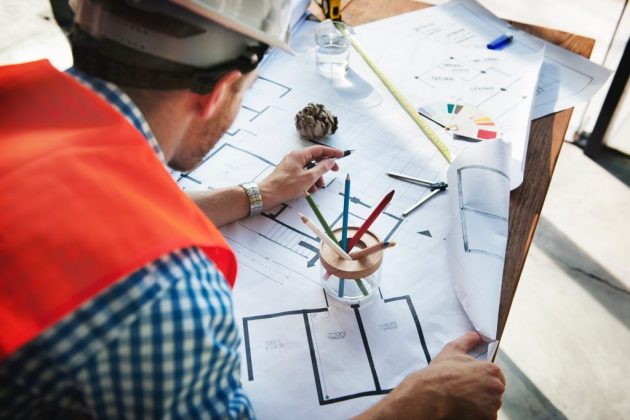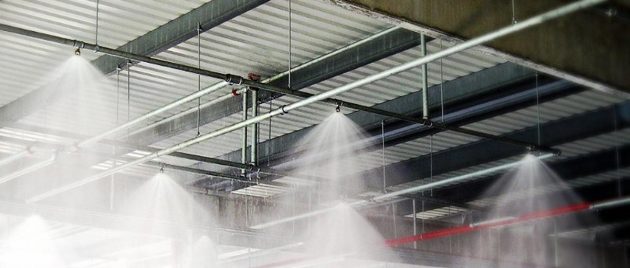There are so many things when you are designing, and then constructing a building. You or your architect will have, no doubt, put a lot of thought and research into designing the perfect building for its purpose.
Once you have designed your perfect building, you will want to get on with the construction as soon as possible, and see your creation in it’s full and complete glory.
However, have you considered fire engineering? This is a very important area, and one that should be given just as much consideration as the rest of the building.
Let’s delve a little deeper into this subject.

What Is Fire Engineering?
Fire engineering, also called fire safety engineering, is looking at the design of a building to make it safe in case of a fire.
Safety engineering should keep any people within the building, and the structure of the building itself, safe in the event of a fire, as much as possible.
Fire safety engineering is usually carried out by a company that specialises in the area, who can look at the design of the building, and then incorporate the most effective designs of technology to increase the safety of the building.
A Risk Assessment
The first thing to do to make your building as safe as possible from fire, is to have a fire safety engineering consultant look at the designs for your project.
They can then give you a detailed report on how and where fire safety protocols should be put in place.
This will ensure that the design of your building meets the required fire regulations within your state or country, and from there can work with you to ensure your building is as safe as it can be.
Upkeep Your Fire Safety
Once your building has been built, and the appropriate fire safety systems in place, your fire safety engineer consultant will regularly inspect your building to ensure it is still as safe as possible.
This usually involves having them come and inspect your building on a regular basis, this can either be once or twice a year, as they recommend.
They can then ensure all your fire safety systems are working properly, and let you know if any further steps need to be taken, or any technology needs updating.
Fire safety is a constantly changing sector, with new technology and design appearing all the time. By having your building regularly inspected, you can keep it as safe as possible.
Fire Suppression Systems
There are many different types of fire suppression systems, for use in different types of fire.
Sprinkler systems are the most well known types of fire suppression, and can be easily recognised by the little metal mounts of ceilings throughout larger buildings like offices or tower blocks.
Sprinklers are usually heat sensitive, so when a certain temperature is reached, it switches the sprinklers on which then emit water to put out the fire.
Gas fire suppression is usually used in an area where water would be inadvisable, for example, electrical fires.
Gas suppression is usually found in rooms that contain large amounts of electrical equipment, like computer server rooms. It works by releasing gas into a room which removes the oxygen, and without oxygen, the fire cannot continue, By not using water, the electrical equipment within the room can usually be salvaged, depending on how far the fire travelled.
Fire Stops
Fire stops are methods of containing a fire within a room, giving the occupants of the building time to leave, and allowing the fire services to extinguish the fire without it travelling too far.
Expandable foam is a very common type of fire stop. It is heat activated, so it remains inert until exposed to a certain temperature, at which point it activates and expands. This is commonly used to seal gaps between rooms or areas, such as where pipes and wires go through the walls. Thus, sealing the fire within a room
There are also pipe coverings which work on the same principle, and stop fire spreading through a pipe system in a building. Again, it remains inert at room temperature, but once the covering is exposed to heat, it expands and crushes the pipe, sealing it off.
Other types of fire stops include fire resistant ceiling tiles, wall coverings and floor coverings to slow the spread of fire.
Fire Doors
Fire doors are a well known form of preventing the spread of fire. These types of doors are specifically designed to slow fire spread, allowing the fire to be contained, and the fire services to arrive.
These doors are made of fire resistant materials, and the more modern designs even allow the inclusion of a glass window which is also fire resistant.
The glass window makes the doors much more aesthetically pleasing within a building, and therefore increases client compliance.
Fire doors should not be propped open, and to combat this problem, there are special fire door door stops, which release when the fire alarm goes off, or they sense a certain temperature, closing and sealing off the fire.
Fire Alarms
Every building, whether residential or business should have fire alarms installed. These are the basis of fire safety.
In more modern buildings, these are wired to the electric unlike the old fashioned battery operated ones, and often wired to the backup electrical system also in case of catastrophe.
Fire alarms can be operated both manually by the pulling of a lever or pressing of a button, or automatically when it senses heat or smoke.
Fire alarms should sound within the entire building, and lights should also flash for people with hearing problems.
Fire alarms can also be connected to the local fire station, to alert them to the fire as soon as possible.
Along with fire alarms, there should also be emergency lighting, which is connected to a backup electrical system, and will light the building in case of fire to allow people to find their way out.
As you can see, there are many ways of protecting your building in the face of a fire, consult a fire safety engineer to get the best possible technology installed.















